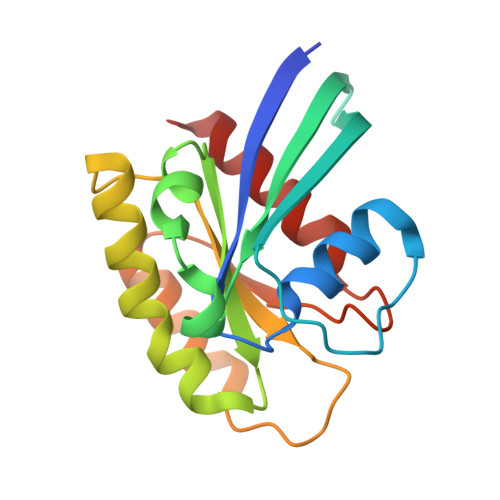Molecular Mechanism for Conformational Dynamics of Ras-GTP Elucidated from In-Situ Structural Transition in Crystal
Matsumoto, S., Miyano, N., Baba, S., Liao, J., Kawamura, T., Tsuda, C., Takeda, A., Yamamoto, M., Kumasaka, T., Kataoka, T., Shima, F.(2016) Sci Rep 6: 25931-25931
- PubMed: 27180801
- DOI: https://doi.org/10.1038/srep25931
- Primary Citation of Related Structures:
5B2Z, 5B30 - PubMed Abstract:
Ras•GTP adopts two interconverting conformational states, state 1 and state 2, corresponding to inactive and active forms, respectively. However, analysis of the mechanism for state transition was hampered by the lack of the structural information on wild-type Ras state 1 despite its fundamental nature conserved in the Ras superfamily. Here we solve two new crystal structures of wild-type H-Ras, corresponding to state 1 and state 2. The state 2 structure seems to represent an intermediate of state transition and, intriguingly, the state 1 crystal is successfully derived from this state 2 crystal by regulating the surrounding humidity. Structural comparison enables us to infer the molecular mechanism for state transition, during which a wide range of hydrogen-bonding networks across Switch I, Switch II and the α3-helix interdependently undergo gross rearrangements, where fluctuation of Tyr32, translocation of Gln61, loss of the functional water molecules and positional shift of GTP play major roles. The NMR-based hydrogen/deuterium exchange experiments also support this transition mechanism. Moreover, the unveiled structural features together with the results of the biochemical study provide a new insight into the physiological role of state 1 as a stable pool of Ras•GTP in the GDP/GTP cycle of Ras.
- Division of Molecular Biology, Department of Biochemistry and Molecular Biology, Kobe University Graduate School of Medicine, 7-5-1 Kusunoki-cho, Chuo-ku, Kobe 650-0017, Japan.
Organizational Affiliation:



















